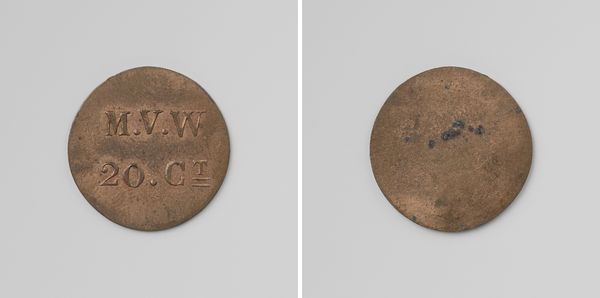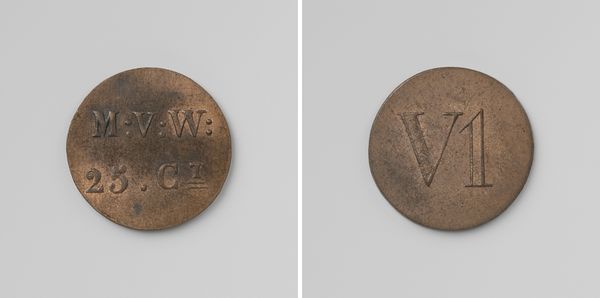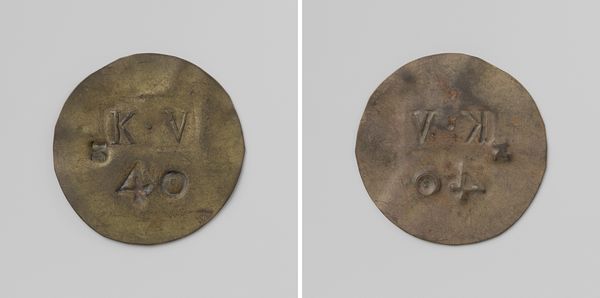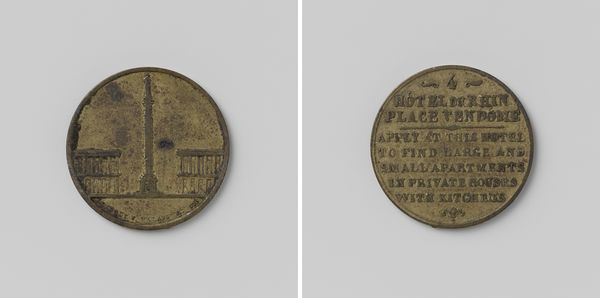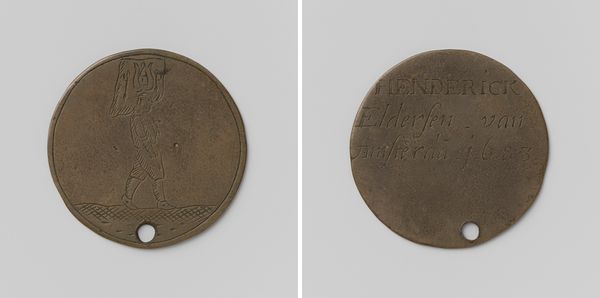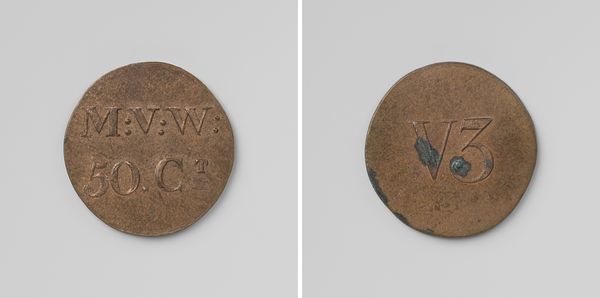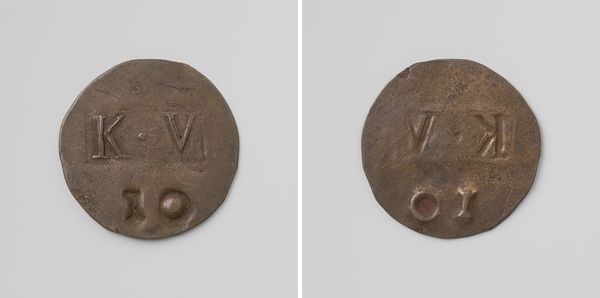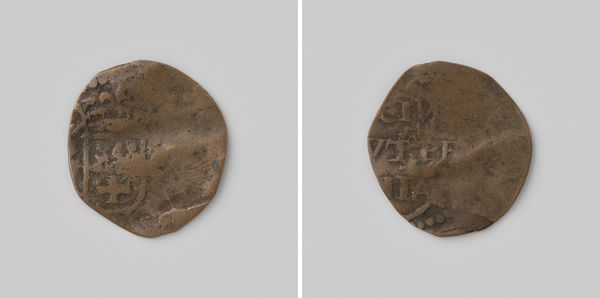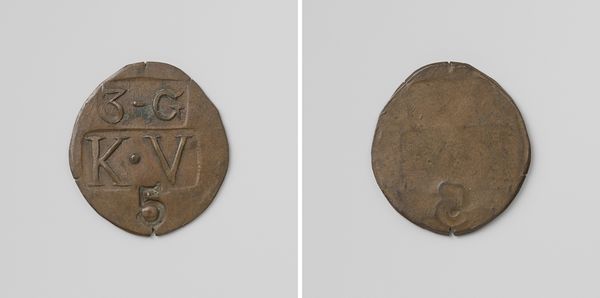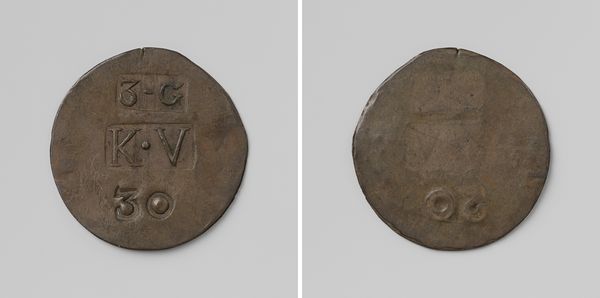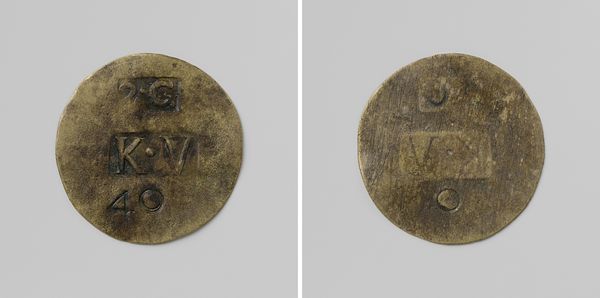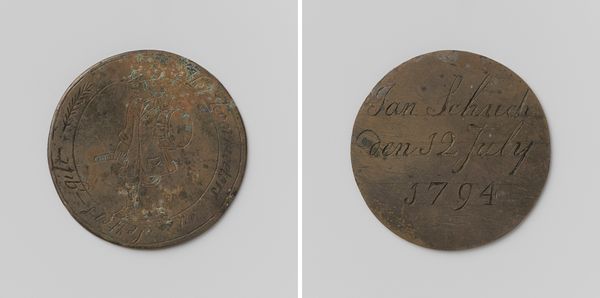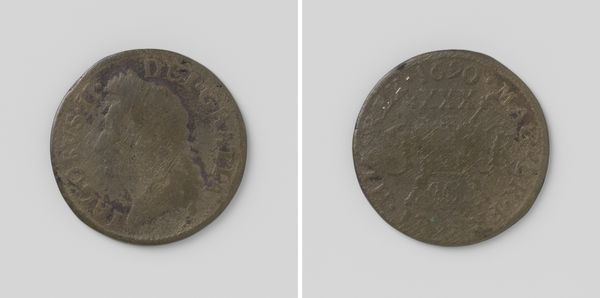
Huismunt geslagen op last van de Maatschappij van Weldadigheid ter waarde van vijftien cent, ten behoeve van de Gewone Koloniën 1818 - 1859
0:00
0:00
print, metal, engraving
# print
#
metal
#
engraving
Dimensions: diameter 2.1 cm, weight 2.14 gr
Copyright: Rijks Museum: Open Domain
Editor: We're looking at a house coin, "Huismunt geslagen op last van de Maatschappij van Weldadigheid ter waarde van vijftien cent, ten behoeve van de Gewone Koloniën." It's anonymous and dates from between 1818 and 1859. It's crafted from metal and printmaking and lives at the Rijksmuseum. Looking at the inscriptions and its obvious wear, I'm struck by how utilitarian it appears. What can you tell us about it? Curator: This coin isn't just a practical object; it’s a reflection of the social engineering of the time. These coins were commissioned by the Society of Benevolence for their colonies. What kind of message do you think this signals when this “currency” is limited to these spaces only? Editor: That's interesting. So, it’s not a universal currency, but a currency bound to a specific social experiment, meant for internal use in these settlements... Curator: Precisely. These "colonies" were essentially work camps created to address poverty and unemployment. This coin reinforces a separation of those inside and outside of those spaces. By limiting monetary exchange, it shaped lives within this particular environment, also making their exit from the cycle of poverty more difficult to navigate. Think about the power dynamics at play – who benefits from this system, and how does it influence perceptions of poverty? Editor: So it’s a fascinating object in that it speaks to very localized power dynamics through its existence and circulation, which has larger implications about poverty, societal structures, and the control of populations? Curator: Absolutely. And by understanding that context, we can reflect on the continued role that institutions and economics play in these same issues today. Editor: This conversation has given me so much to think about; it's far more than just an old coin! Curator: Exactly. Art objects, even mundane ones, are so valuable when we see them as part of the broader societal narrative.
Comments
No comments
Be the first to comment and join the conversation on the ultimate creative platform.
